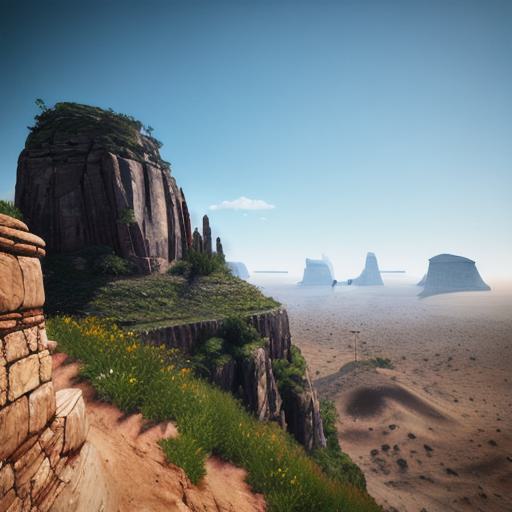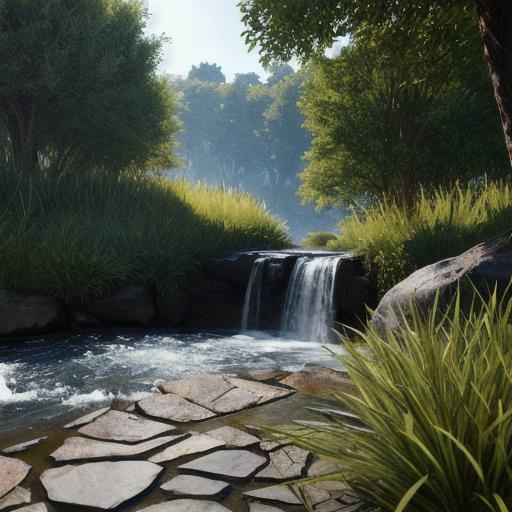Game development is a complex and ever-evolving field, with new tools and technologies emerging all the time. As game developers, it’s essential to stay up-to-date with the latest tools and techniques to create high-quality games that engage and delight players. In this comprehensive guide, we will explore the top 10 tools for game development, including their features, capabilities, and applications.
- Unity
Unity is one of the most popular game engines on the market, with a wide range of features and capabilities that make it suitable for both beginners and experienced developers. It supports 2D and 3D graphics, animation, physics, and multiplayer functionality, making it an ideal choice for creating games across multiple platforms, including PC, mobile, and console.
Some key features of Unity include:
- A flexible scripting language that supports C and JavaScript
- Integrated development environment (IDE) with real-time rendering and debugging
- Asset store with a vast library of pre-built assets, plugins, and tools
- Cross-platform support for Windows, Mac, Linux, iOS, Android, WebGL, and consoles
- Support for virtual reality (VR) and augmented reality (AR) development
Unity is widely used in the game industry, with popular games like "PUBG," "The Elder Scrolls Online," and "Monster Hunter: World" being developed using this engine.
- Unreal Engine
Unreal Engine is another powerful game engine that offers a wide range of features and capabilities for game development. It is known for its high-performance rendering, advanced physics simulation, and support for virtual reality (VR) and augmented reality (AR) development.
Some key features of Unreal Engine include:
- A flexible scripting language that supports C++ and Blueprints
- Integrated development environment with real-time rendering and debugging
- Asset store with a vast library of pre-built assets, plugins, and tools
- Cross-platform support for Windows, Mac, Linux, iOS, Android, WebGL, and consoles
- Advanced graphics and physics simulation capabilities
Unreal Engine is widely used in the game industry, with popular games like "Fortnite," "Epic Games Showcase," and "Sam Fisher’s Sanctuary" being developed using this engine.
- GameMaker Studio 2
GameMaker Studio 2 is a beginner-friendly game development platform that offers a wide range of features and capabilities for creating 2D games. It is known for its simplicity, ease of use, and support for mobile and web platforms.
Some key features of GameMaker Studio 2 include:
- Drag-and-drop interface for easy scripting and game development
- Integrated development environment with real-time rendering and debugging
- Asset store with a vast library of pre-built assets, plugins, and tools
- Support for mobile, web, and desktop platforms
- Cross-platform publishing capabilities
GameMaker Studio 2 is widely used by beginners and small indie game development studios to create high-quality games quickly and efficiently.
- Godot
Godot is an open-source game engine that offers a wide range of features and capabilities for creating 2D and 3D games. It is known for its ease of use, advanced graphics rendering, and support for mobile and web platforms.
Some key features of Godot include:
- A flexible scripting language that supports C++ and GDScript
- Integrated development environment with real-time rendering and debugging
- Asset store with a vast library of pre-built assets, plugins, and tools
- Support for mobile, web, and desktop platforms
- Cross-platform publishing capabilities
Godot is widely used by both beginners and experienced game developers to create high-quality games quickly and efficiently.
- Blender
Blender is a powerful 3D modeling and animation software that is widely used in the game development industry. It offers a wide range of features and capabilities for creating 3D models, textures, animations, and visual effects.

Some key features of Blender include:
- Advanced modeling, sculpting, and animation tools
- Real-time rendering and simulation capabilities
- Support for multiple file formats, including FBX, OBJ, and STL
- Integration with other game development tools and engines, such as Unity and Unreal Engine
- Cross-platform support for Windows, Mac, Linux, and mobile devices
Blender is widely used by game developers to create high-quality 3D graphics and animations for games across multiple platforms.
- Photoshop
Photoshop is a powerful image editing software that is widely used in the game development industry for creating textures, visual effects, and other graphic design elements. It offers a vast range of features and capabilities for manipulating images, including layers, filters, and masking tools.
Some key features of Photoshop include:
- Advanced image editing tools, including layers, filters, and masking
- Integration with other game development tools and engines, such as Unity and Unreal Engine
- Support for multiple file formats, including PNG, JPEG, and TIFF
- Cross-platform support for Windows, Mac, Linux, and mobile devices
- Advanced image manipulation capabilities
Photoshop is widely used by game developers to create high-quality visual elements for games across multiple platforms.
- Substance Painter
Substance Painter is a specialized texture painting software that is widely used in the game development industry for creating realistic textures and materials for 3D models. It offers a vast range of features and capabilities for manipulating textures, including layer blending, material properties, and noise mapping.
Some key features of Substance Painter include:
- Advanced texture painting tools, including layers, brushes, and masking
- Real-time rendering and simulation capabilities
- Integration with other game development tools and engines, such as Unity and Unreal Engine
- Support for multiple file formats, including PNG, JPEG, and TIFF
- Cross-platform support for Windows, Mac, Linux, and mobile devices
Substance Painter is widely used by game developers to create high-quality textures and materials for 3D models in games across multiple platforms.
- Maya
Maya is a powerful 3D modeling and animation software that is widely used in the game development industry for creating complex 3D models, animations, and visual effects. It offers a vast range of features and capabilities for manipulating 3D objects, including sculpting, rigging, and animation tools.
Some key features of Maya include:
- Advanced modeling, animation, and visual effects tools
- Real-time rendering and simulation capabilities
- Integration with other game development tools and engines, such as Unity and Unreal Engine
- Support for multiple file formats, including FBX, OBJ, and STL
- Cross-platform support for Windows, Mac, Linux, and mobile devices
Maya is widely used by game developers to create high-quality 3D graphics and animations for games across multiple platforms.
- ZBrush
ZBrush is a specialized 3D modeling software that is widely used in the game development industry for creating detailed and realistic 3D models. It offers a vast range of features and capabilities for manipulating 3D objects, including sculpting, texture painting, and animation tools.
Some key features of ZBrush include:
- Advanced 3D modeling tools, including sculpting, texture painting, and animation
- Real-time rendering and simulation capabilities
- Integration with other game development tools and engines, such as Unity and Unreal Engine
- Support for multiple file formats, including FBX, OBJ, and STL
- Cross-platform support for Windows, Mac, Linux, and mobile devices
ZBrush is widely used by game developers to create high-quality 3D models with intricate details and realistic textures for games across multiple platforms.
- Git
Git is a version control system that is widely used in the game development industry for managing code changes, collaborating with team members, and tracking project progress. It offers a vast range of features and capabilities for managing code repositories, including branching, merging, and deployment tools.
Some key features of Git include:
- Advanced version control tools, including branching, merging, and code reviews
- Collaboration and team management capabilities
- Integration with other game development tools and engines, such as Unity and Unreal Engine
- Cross-platform support for Windows, Mac, Linux, and mobile devices
- Scalability for large and complex projects
Git is widely used by game developers to manage code changes and collaborate with team members efficiently across multiple platforms.

Conclusion
In conclusion, there are many tools and software available in the game development industry that can help create high-quality games quickly and efficiently. The choice of tool depends on the type of game being developed and the skillset of the development team. By using these tools effectively, game developers can create engaging and immersive gaming experiences for players across multiple platforms.



